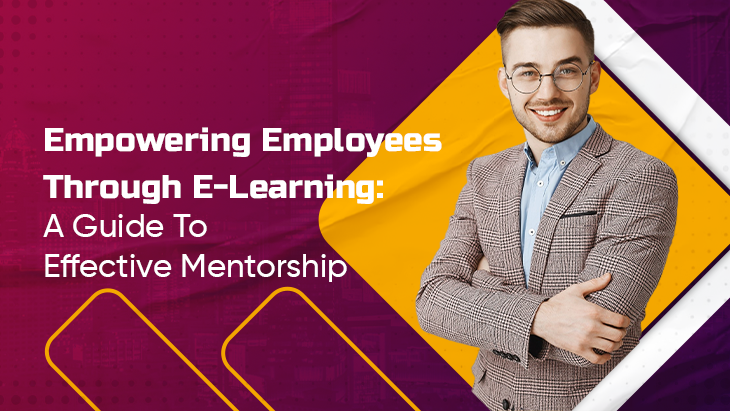In today’s fast-paced business environment, companies are constantly seeking ways to enhance their workforce's skills and capabilities. As industries evolve and technology advances, traditional mentorship models are being redefined. E-learning has emerged as a powerful tool in facilitating effective mentorship, empowering employees to take charge of their professional development. This guide explores how organizations can harness e-learning for mentorship to create a more engaged, knowledgeable, and capable workforce.
The Need for Modern Mentorship
Historically, mentorship involved a one-on-one relationship, often limited by geography and time constraints. As organizations expand globally and employees increasingly work remotely, the need for a more flexible mentorship model has become evident. E-learning bridges this gap, providing a platform for continuous learning and mentorship that transcends traditional boundaries.
Benefits of E-Learning in Mentorship
- Flexibility and Accessibility: E-learning allows employees to engage in mentorship at their convenience. They can access resources and sessions from anywhere, making it easier to fit learning into their busy schedules. This flexibility ensures that mentorship can continue even amidst changes in work environments.
- Diverse Learning Opportunities: E-learning platforms offer a wealth of resources, from video tutorials and webinars to interactive modules and online forums. This variety caters to different learning styles, ensuring that employees can choose the methods that resonate most with them.
- Scalability: As organizations grow, e-learning can scale seamlessly. Whether you have ten employees or ten thousand, online mentorship programs can be expanded without the logistical challenges associated with traditional in-person mentoring.
- Data-Driven Insights: E-learning platforms often come equipped with analytics tools that track employee progress and engagement. This data can provide valuable insights into how mentorship is being utilized, helping organizations refine their programs to better meet employee needs.
- Cost-Effectiveness: Traditional mentoring often requires significant resources, including travel and accommodation costs for in-person meetings. E-learning reduces these costs, making mentorship programs more sustainable and accessible for organizations of all sizes.
Implementing E-Learning Mentorship Programs
To successfully implement e-learning mentorship programs, organizations should consider the following steps:
1. Define Goals and Objectives
Before launching an e-learning mentorship initiative, it’s crucial to define clear goals. What do you hope to achieve? Are you looking to upskill employees in specific areas, foster leadership qualities, or improve employee retention? Clear objectives will guide the development of the program and help measure its success.
2. Choose the Right E-Learning Platform
Selecting an e-learning platform that aligns with your organization’s needs is essential. Consider factors such as user-friendliness, content variety, support features, and integration capabilities with existing systems. Platforms should also support interactive features, allowing for real-time communication and feedback between mentors and mentees.
3. Develop a Structured Curriculum
While e-learning provides flexibility, a structured curriculum is vital for ensuring that mentorship stays focused and purposeful. Collaborate with experienced mentors to create a curriculum that includes essential topics, recommended resources, and actionable exercises that encourage practical application of knowledge.
4. Encourage Collaboration and Networking
E-learning mentorship shouldn't be limited to one-on-one interactions. Create opportunities for mentees to collaborate with peers through discussion forums, group projects, or virtual networking events. These interactions foster a sense of community and encourage knowledge sharing, enriching the learning experience.
5. Train Mentors
To maximize the effectiveness of e-learning mentorship, mentors must be adequately trained. Provide mentors with resources on effective coaching techniques, communication skills, and how to navigate the e-learning platform. A well-prepared mentor can guide mentees more effectively, enhancing their learning experience.
6. Foster a Culture of Feedback
Encouraging feedback from both mentors and mentees is crucial for continuous improvement. Regular check-ins and surveys can provide insights into what’s working and what needs adjustment. This feedback loop ensures that the program evolves and remains relevant to employees’ needs.
Overcoming Challenges
While e-learning mentorship offers numerous benefits, it is not without challenges. Organizations may face obstacles such as technological barriers, varying levels of digital literacy, and resistance to change. Here’s how to address these issues:
Provide Training: Offer training sessions to help employees familiarize themselves with the e-learning platform and tools. This can boost confidence and engagement.
Ensure Technical Support: Establish a support system to assist users with technical issues. This can help mitigate frustrations and ensure a smooth learning experience.
Promote a Growth Mindset: Cultivate a culture that values learning and growth. Encourage employees to view mentorship as an opportunity for personal and professional development rather than a chore.
Measuring Success
To assess the effectiveness of your e-learning mentorship program, consider the following metrics:
Participation Rates: Track how many employees are engaging with the program. High participation rates can indicate interest and perceived value.
Feedback Surveys: Regularly gather feedback from mentors and mentees to identify areas for improvement and gauge satisfaction levels.
Performance Metrics: Analyze changes in employee performance, productivity, and retention rates over time to measure the program's impact on the organization.
Conclusion
Empowering employees through e-learning mentorship is a forward-thinking approach that can significantly enhance workforce development. By leveraging technology to create flexible, accessible, and scalable mentorship programs, organizations can foster a culture of continuous learning and growth. As businesses navigate the complexities of a rapidly changing world, investing in e-learning mentorship program not only equips employees with the skills they need but also strengthens the organization’s overall resilience and adaptability. By embracing this innovative approach, companies can cultivate a more engaged, capable, and empowered workforce ready to tackle the challenges of tomorrow.






Leave a reply